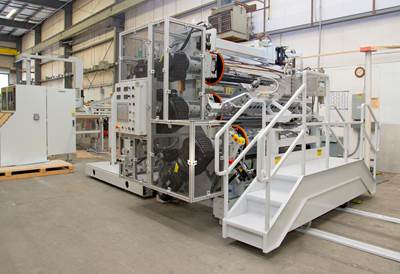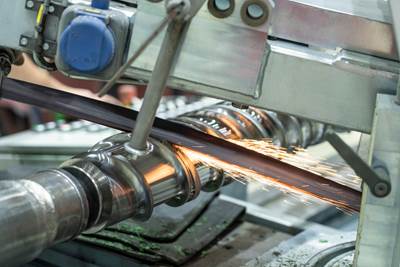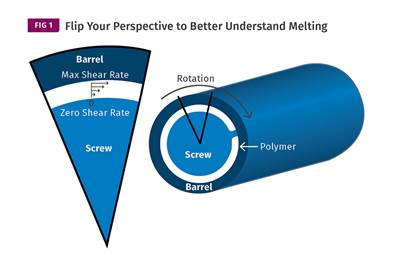Extrusion Know How
What You Need to Know About Melt-Temperature Measurement in Single-Screw Extruders
Measuring the discharge temperature is not so simple, especially when using thermocouples positioned in the transfer line just upstream of the die.
Read MoreHow to Select the Right Cooling Stack for Sheet
First, remember there is no universal cooling-roll stack. And be sure to take into account the specific heat of the polymer you are processing.
Read MoreWhat's Restricting My Output Rate?
In a single-screw extruder, it could be an improperly designed barrier flighted entry section. Here’s why.
Read MoreHow to Decrease the Extrudate Temperature in Single-Screw Extruders
In many cases, decreasing the discharge temperature will improve product quality and perhaps even boost rate. Here are ways to do it.
Read MoreWhy Are There No 'Universal' Screws for All Polymers?
There’s a simple answer: Because all plastics are not the same.
Read MoreIn Single Screw Extruders, Mixing Starts in the Melting Process
While the melting process does not provide perfect mixing, this study shows that mixing is indeed initiated during melting.
Read MoreTroubleshooting Flow Surging in Single-Screw Extruders
Surging can cause lower production rates, higher scrap rates, material degradation and higher labor costs. Here is a guide to troubleshooting this problem.
Read MoreUnderstanding the Incumbent Resin Effect
When you are looking to replace an existing resin with a new one, in trials sometimes the “incumbent” resin will cause gels and other defects. Here’s what to look for.
Read MoreUnderstanding Melting in Single-Screw Extruders
You can better visualize the melting process by “flipping” the observation point so the barrel appears to be turning clockwise around a stationary screw.
Read MoreA Guide to Single-Screw Mixers
To design the best mixers for single screws, you must completely understand how polymer moves through a mixer channel or groove.
Read More


















